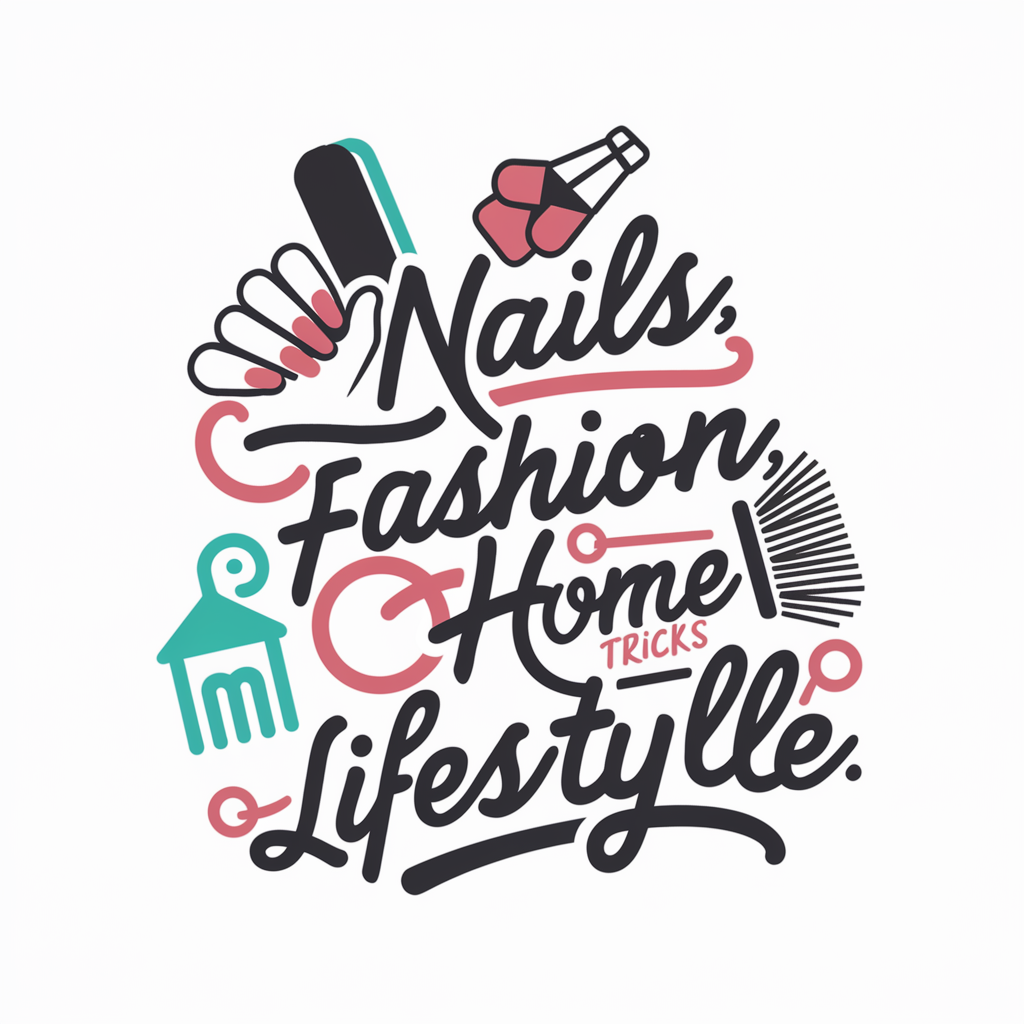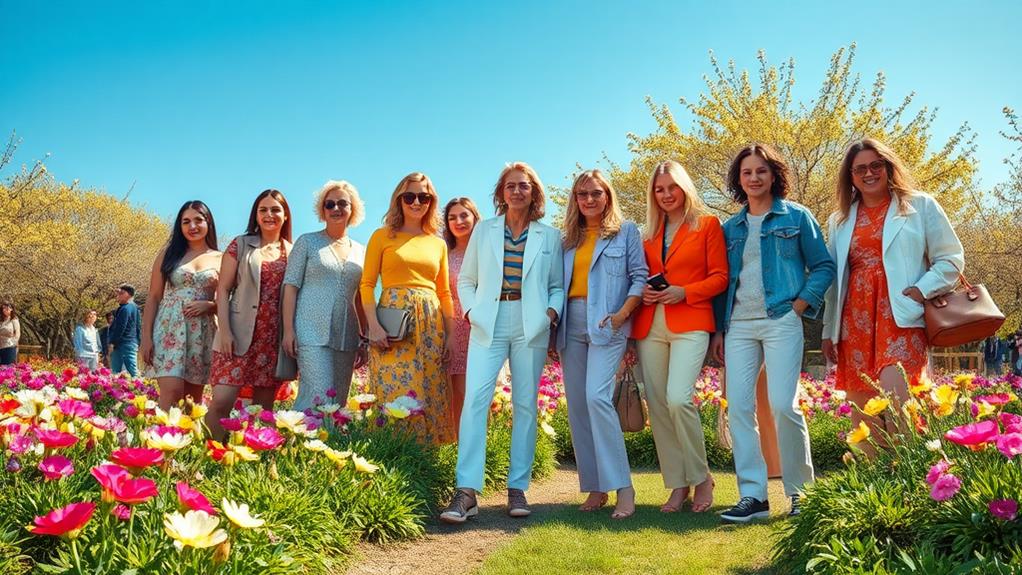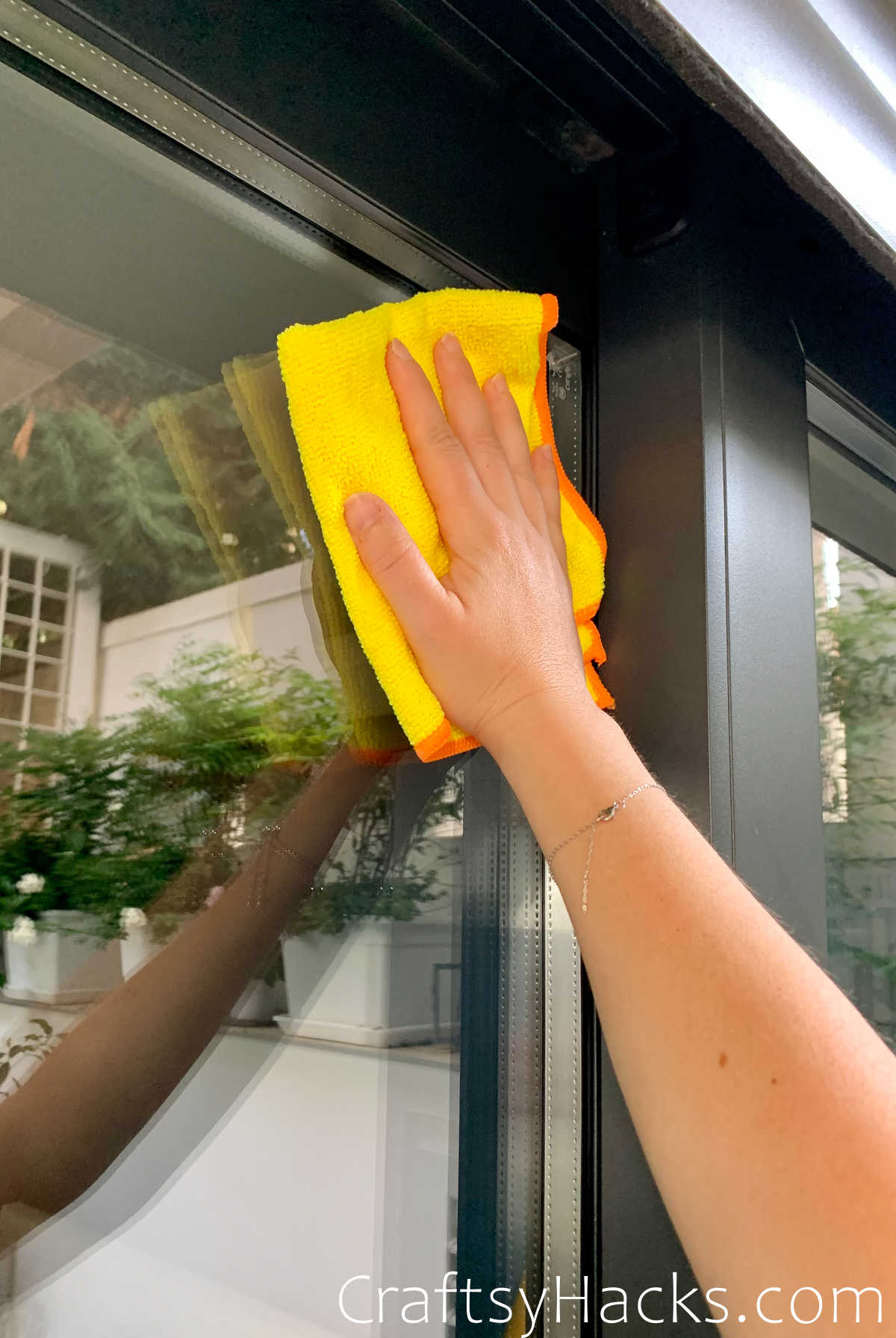You might wonder why the trend of women shaving their bodies took root over time. It’s not just a matter of personal preference; historical and cultural shifts have played a significant role in shaping these beauty standards. From ancient civilizations that equated smooth skin with purity, to the influential messages of the Victorian Era and beyond, each era brought its own ideals. As you consider these transformations, think about how they’ve influenced modern practices and what this means for women today. The complexities behind this trend might surprise you.
Key Takeaways
- Ancient civilizations prioritized body hair removal for hygiene and aesthetic appeal, linking smooth skin to beauty and cleanliness.
- The Victorian Era popularized hairlessness through media and advertising, establishing societal norms that equated attractiveness with smooth skin.
- The flapper movement in the 1920s encouraged women to embrace personal grooming, using shaving as a symbol of freedom and individuality.
- Women’s roles during World War II challenged traditional gender norms, making shaving a way to express femininity amidst newfound independence.
- Modern beauty standards continue to idealize smooth skin, while counter-movements promote body hair acceptance and individual choice in grooming practices.
Historical Context of Body Hair
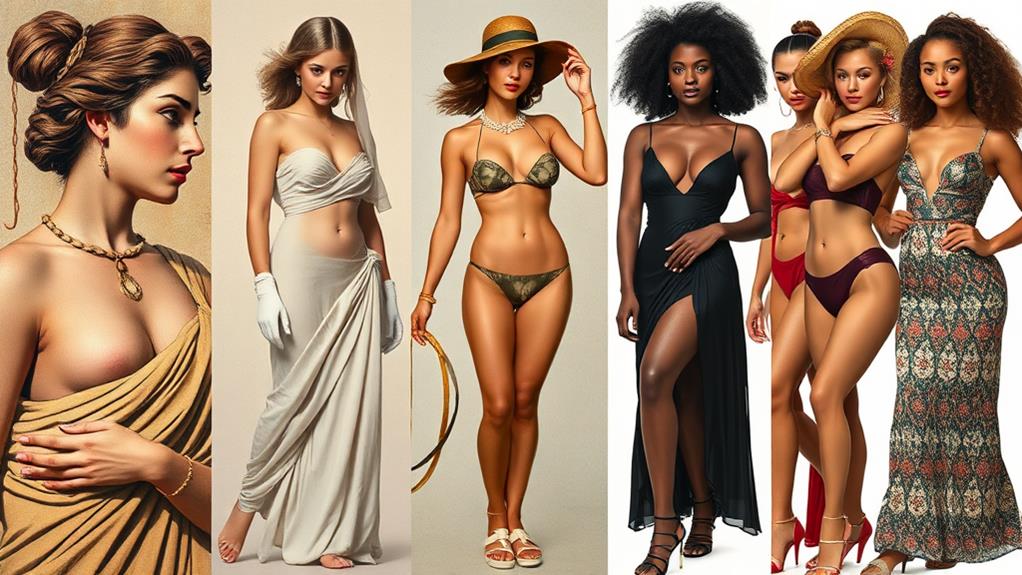
Throughout history, varying cultures have approached body hair with different values and practices. In ancient Egypt, for example, people valued smooth skin and often removed body hair for cleanliness and beauty. They used tools made of sharpened stones and later, metal to shave. This idea of removing hair spread, influencing other cultures.
In Greece, women sometimes shaved their heads, while in Rome, smooth skin became a symbol of status. Many Roman women used a special tool called a strigil to scrape off hair and dirt. This shows that even back then, beauty standards were tied to body hair.
As you explore these historical practices, it’s exciting to see how different societies viewed body hair. Some embraced it, while others thought it should be removed. Each culture had its own unique reasons, from hygiene to beauty.
Understanding this historical context can help you appreciate your own choices today. Whether you choose to shave or not, remember that these decisions are personal and shaped by your own values.
Ancient Beauty Standards
Beauty standards in ancient cultures were often closely tied to the presence or absence of body hair. In many societies, smooth skin was seen as a sign of beauty, youth, and even social status. For instance, in ancient Egypt, both men and women removed body hair using tools like tweezers or a mixture of oils and sugars. They believed that being hairless made them look more elegant and sophisticated.
In Greece, women prized a hairless body, associating it with femininity and purity. They used various methods, including simple razors and a process called depilation.
In contrast, some cultures celebrated body hair as a symbol of strength and maturity. For example, in certain tribes, men with beards were seen as wise and powerful.
These ancient beauty standards show how different societies viewed body hair differently. If you think about it, beauty trends have always changed!
Today, you can choose what feels right for you. Whether you love hair or prefer smooth skin, it’s all about what makes you feel confident and happy. Embrace your unique style, just like those ancient cultures did!
Victorian Era Influences
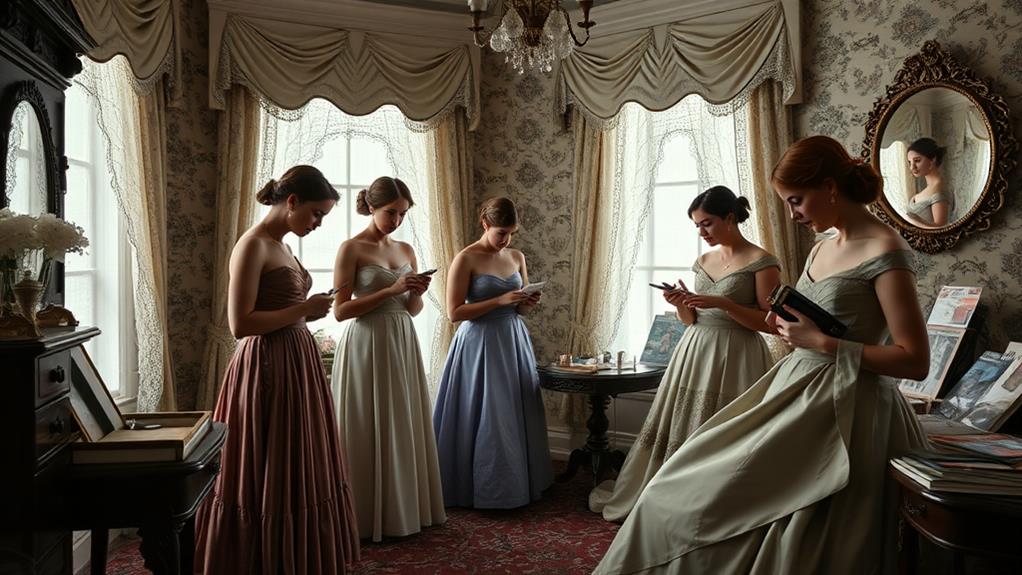
During the Victorian Era, beauty standards started to shift dramatically, encouraging women to embrace a more refined look.
As magazines and advertisements began to promote hairless beauty, you might’ve felt tempted to follow suit and adopt these new trends.
This change in perspective not only influenced personal grooming habits but also shaped how society viewed femininity and attractiveness.
Changing Beauty Standards
In the Victorian era, societal expectations began to shift, leading many women to reconsider their grooming habits. Suddenly, it became important to present a polished image, and this included how women managed their body hair. People started to see a more refined look as a sign of beauty and femininity. With the rise of fashionable clothing, women wanted to show off their arms and legs, making hair removal a vital part of their routines.
You might wonder how this change happened. Well, it was a combination of cultural influences and new ideas about beauty. Women looked up to the celebrities of their time, who often showcased smooth skin in illustrations and photographs. This made many feel that shaving was essential for social acceptance.
As you explore these shifting beauty standards, remember that grooming isn’t just about following trends. It’s about feeling confident and comfortable in your own skin.
Today, whether you choose to shave or not, the most important thing is to embrace your unique beauty. So, go ahead and express yourself, because your choices are what truly matter!
Advertising and Media Influence
As the Victorian era progressed, advertising and media began to play a pivotal role in shaping societal norms around body hair. With the rise of magazines and newspapers, companies started promoting products that promised smooth, hair-free skin. They created catchy slogans and illustrations, making it seem like every woman should be hairless to be considered beautiful.
You might notice how these ads targeted your feelings, suggesting that if you didn’t shave, you wouldn’t be as attractive or desirable. This idea quickly took hold, and soon, many women felt pressured to follow suit. The media portrayed hairless bodies as sophisticated and elegant, making it almost a requirement for women to fit into society.
As a result, shaving became a common practice, and products like razors and creams flew off the shelves. You can see how this shift in beauty standards wasn’t just about personal choice but was influenced by what you read and saw.
The advertisements made shaving not just practical but also a trendy and essential part of a woman’s grooming routine. This change in perception continues to affect our views on body hair today.
The Rise of the Flapper
As the flapper movement took off in the 1920s, fashion changed dramatically, and so did women’s choices about their bodies.
You might notice how Hollywood icons inspired ladies to express themselves with shorter hairstyles and daring outfits, which also encouraged them to embrace shaving.
This newfound liberation let women celebrate their femininity in ways that felt fresh and exciting!
Cultural Shifts in Fashion
The rise of the flapper in the 1920s revolutionized women’s fashion, challenging traditional norms and embracing a newfound sense of freedom. Flappers were young women who broke away from the old-fashioned styles of their mothers. They wore shorter dresses that danced above the knee, which was daring at the time! Instead of corsets, they favored loose-fitting clothes that allowed them to move freely.
With this new style came a shift in beauty standards. Women started to see the importance of personal grooming. Shaving became popular as flappers revealed more skin, showing off their legs and arms. The idea was to look modern and fresh, reflecting their lively spirit. You could say they were setting trends that would last for generations!
Flappers also embraced accessories like bobbed haircuts, cloche hats, and chunky jewelry. They wanted to express their individuality and have fun while doing it. This bold attitude made fashion more accessible and exciting for everyone.
Influence of Hollywood Icons
Hollywood icons played a significant role in popularizing the beauty standards of the flapper era. During the 1920s, stars like Clara Bow and Louise Brooks dazzled audiences with their bold looks and carefree spirits. You probably noticed how these women embraced shorter hairstyles and stylish dresses that showed off their legs. This was a big change from previous styles, and it encouraged many women to try new fashions.
As you look back at that time, you can see how these icons influenced beauty trends, including shaving. Flappers often chose to shave their underarms and legs to match their modern, fashionable image. The smooth skin they showcased became a symbol of freedom and youth. As more women saw these stars in movies, they felt inspired to adopt similar beauty routines.
You might find it exciting to think about how the flapper style led to a shift in what was considered beautiful. With each glamorous appearance, Hollywood icons helped reshape society’s views on femininity.
Liberation and Feminine Expression
Flapper culture marked a revolutionary shift in women’s liberation and self-expression during the 1920s. You could see women breaking free from old-fashioned norms, and it felt exciting!
Flappers embraced a new style, wearing shorter dresses and bobbing their hair, which showed off their confidence and independence. This was a time when women started to feel empowered to express themselves however they wanted.
Shaving became a part of this movement, as many flappers wanted to flaunt their smooth skin in their trendy outfits. It was about more than just looks; it was a statement of freedom.
You might think of how flappers danced the Charleston, laughed, and enjoyed life without the constraints of the past. They were living proof that women could enjoy life on their own terms.
As you explore this era, you realize the importance of self-expression. Flappers inspired countless women to embrace their individuality and take charge of their lives.
World War II and Women’s Roles

As World War II unfolded, women stepped up in unprecedented ways, taking on roles traditionally held by men who’d gone off to fight. With so many men serving in the military, women filled jobs in factories, offices, and even farms.
You might be surprised to learn that many women became welders, mechanics, and plane builders! This was a huge change from the past when these jobs were mostly for men.
As women took on these new roles, they also started to embrace their independence and express themselves in different ways. Shaving their legs and underarms became popular as a way to feel more feminine and confident while working in these tough jobs.
It was a symbol of their strength and a nod to their femininity, showing they could be both practical and stylish.
These changes during the war were exciting! Women realized they could do anything, and that included how they chose to present themselves.
Media Representation and Advertising
Media representation and advertising played a significant role in shaping women’s beauty standards in the mid-20th century. You might remember those glamorous magazine ads featuring women with smooth, hair-free skin, showcasing an ideal that many felt pressured to emulate.
These images were everywhere, from television commercials to billboards, making it seem like every woman needed to shave her body to be beautiful or accepted. As you flipped through those magazines, you’d see models flaunting their flawless legs and underarms, which made shaving feel like a must-do task.
Advertisers skillfully connected shaving with femininity and attractiveness, suggesting that if you didn’t shave, you wouldn’t fit in. This clever marketing made many women feel that they needed to conform to these beauty standards to be noticed or appreciated.
Over time, these messages became deeply ingrained in society. The idea of smooth skin as the norm took root, leading many to adopt shaving as part of their daily routine.
The Impact of Feminism
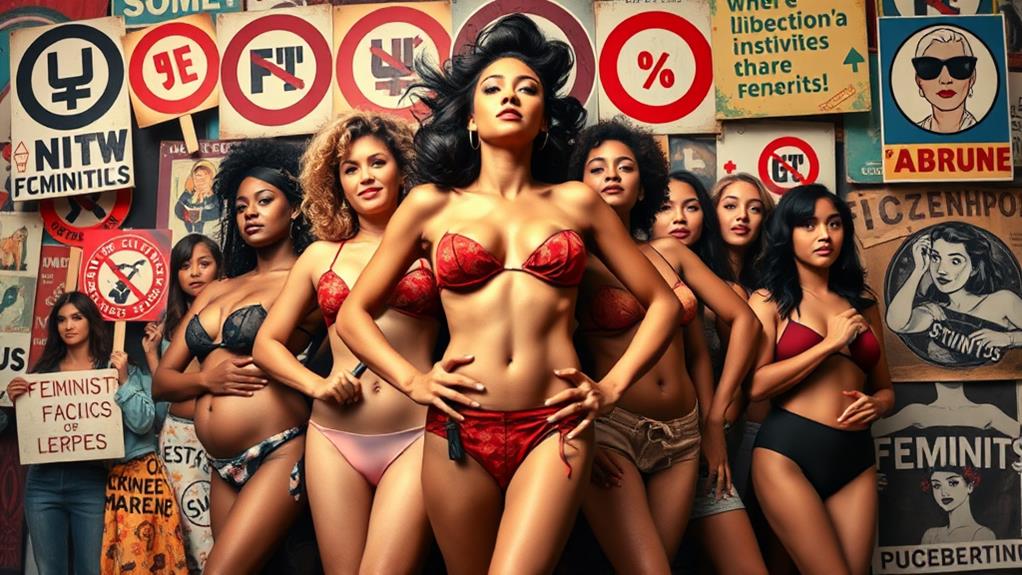
Feminism has significantly reshaped societal perceptions of women’s bodies, particularly regarding shaving. You might notice that the movement encourages women to embrace their choices—whether that means shaving or not. Feminism promotes the idea that your body is yours to decide how to care for, and that includes how you want to present your skin to the world.
As women fought for equal rights and representation, they began to challenge traditional beauty standards. This shift helped many realize that shaving isn’t just about following trends; it’s about personal expression. You may feel empowered to shave if you want a smooth look, or you might choose to keep your natural hair as a statement of self-acceptance.
Feminism also emphasizes that there’s no “right” way to be a woman. Whether you love your body hair or prefer to shave, what matters most is that you make choices that feel best for you.
This more inclusive perspective encourages everyone to celebrate their uniqueness. So, as you think about shaving, remember that it’s all about your comfort and confidence—embrace your personal style!
Cultural Variations in Shaving
When you think about shaving, it’s interesting to see how different cultures have their own unique practices.
Historically, some places embraced body hair, while others saw it differently based on beauty standards.
Today, many women around the world still navigate these cultural expectations, shaping their choices in shaving and grooming.
Historical Practices Worldwide
Throughout history, various cultures have embraced body shaving as a practice steeped in tradition and symbolism. In ancient Egypt, both men and women shaved their bodies to stay cool in the hot climate and to show their social status. They even used sharp tools made from flint or obsidian!
In India, some women used a technique called “udvartan” to exfoliate their skin and enhance beauty. This practice involved rubbing a mixture of herbs on their bodies, often resulting in smoother skin.
In Japan, the practice of body shaving dates back to the Edo period. Women would shave their eyebrows and paint new ones as a form of beauty.
Meanwhile, in some African cultures, shaving heads or certain body parts signifies a rite of passage or a sign of mourning.
These historical practices reflect how body shaving can mean different things in different cultures. It’s fascinating to see how these traditions evolve over time.
Modern Beauty Standards
As societies evolved, so did the perception of beauty, leading to modern beauty standards that vary dramatically across cultures.
Today, you might notice that in some places, smooth skin is highly desired, while in others, body hair is embraced as a sign of beauty. For instance, in Western cultures, many women choose to shave their legs, underarms, and other areas to fit the beauty ideals that promote hairlessness. This trend is often tied to fashion and media influences.
On the other hand, in cultures like those in parts of Africa and the Middle East, body hair is often celebrated. Here, women sometimes use natural methods to enhance their beauty, rather than removing hair.
It’s fascinating how these differences shape the way you might feel about shaving and grooming.
You have the power to define your own beauty standards, whether that means embracing your natural body hair or choosing to shave.
Modern Beauty Trends
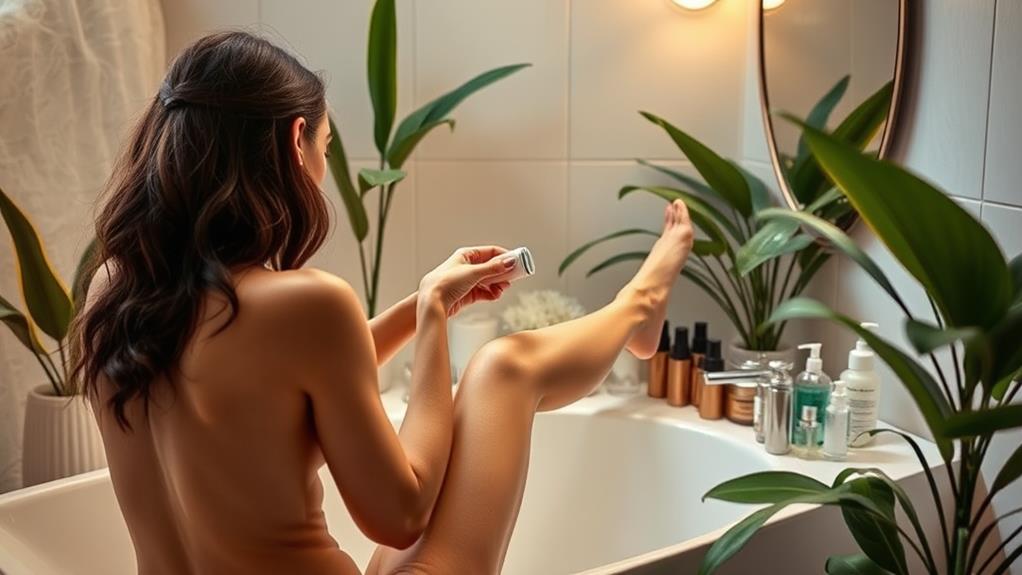
Modern beauty trends have evolved dramatically, shaping how women view body hair and grooming. Today, it feels like there’s a new trend every season! You might notice that more women are embracing smooth skin through shaving, waxing, or laser treatments. These choices often highlight a clean and polished look, which many find appealing.
But trends aren’t just about removing hair. Some women are now flaunting their natural body hair as a bold statement, showing that beauty can come in all forms. You might even see popular influencers celebrating body hair on social media. This shift encourages everyone to think about what beauty means to them.
In addition, beauty brands have started to offer a wider variety of grooming products. You can find everything from gentle razors to luxurious body scrubs. The goal is to make grooming fun and personal.
As you explore these trends, remember that you have the power to choose what works best for you. Whether you want to shave, wax, or embrace your natural hair, it’s all about feeling good in your skin. So, embrace the trends that resonate with you and enjoy your beauty journey!
Personal Choice and Body Positivity
The conversation around body hair and grooming has shifted considerably toward personal choice and body positivity. Nowadays, it’s all about what you feel good doing. If you enjoy shaving your body hair, that’s great! But if you prefer to keep it natural, that’s perfectly fine too. The key is to make choices that reflect who you’re and what makes you feel happy.
Many people are embracing body positivity, which encourages you to love your body just the way it is. This movement celebrates diversity and helps you feel confident, no matter your grooming choices. You might find joy in experimenting with different styles or sticking to a routine that feels comfortable for you.
It’s important to remember that your body is yours, and you have the power to make decisions about it. When you choose to shave or not to shave, you’re making a statement about your individuality.
